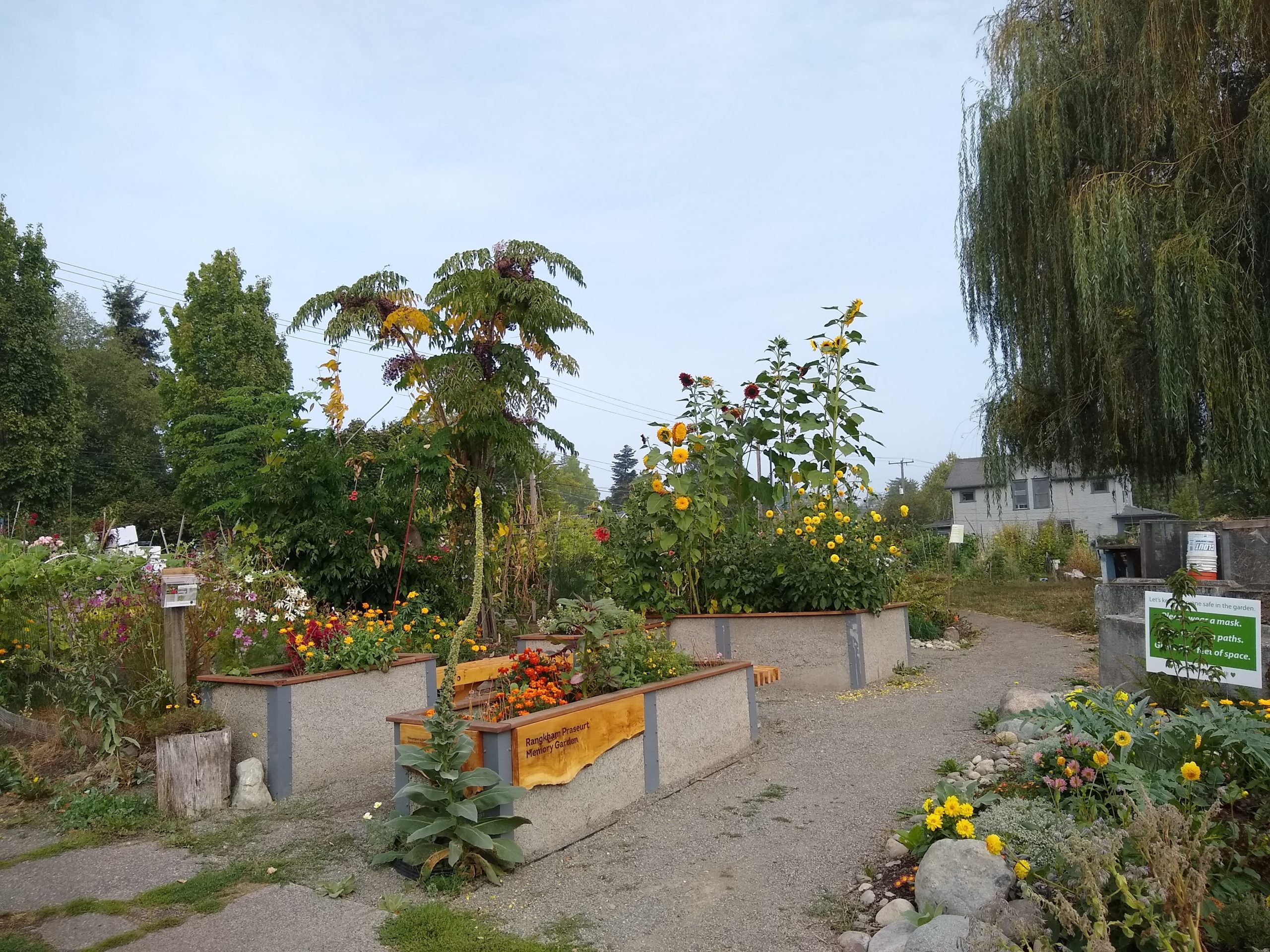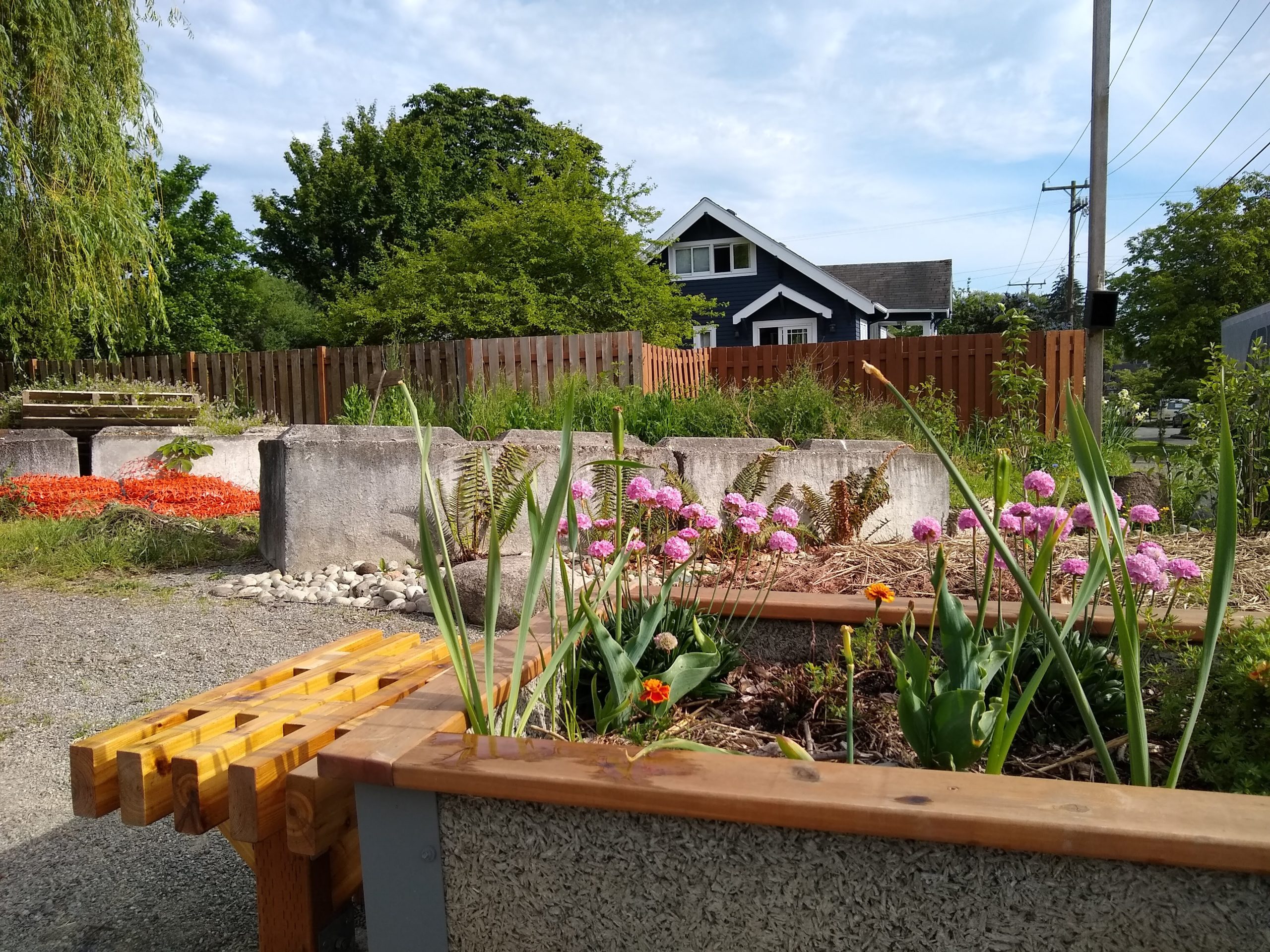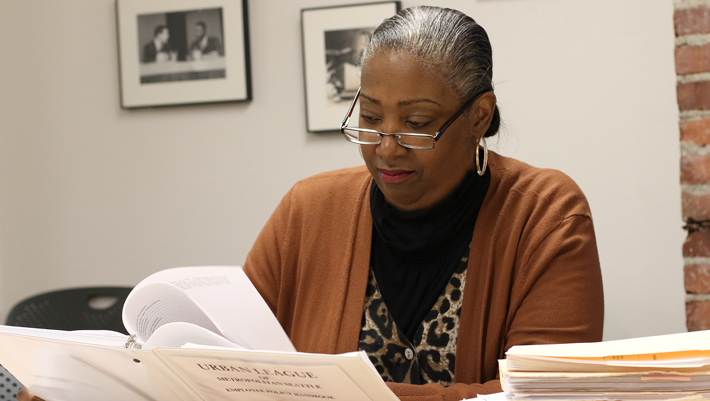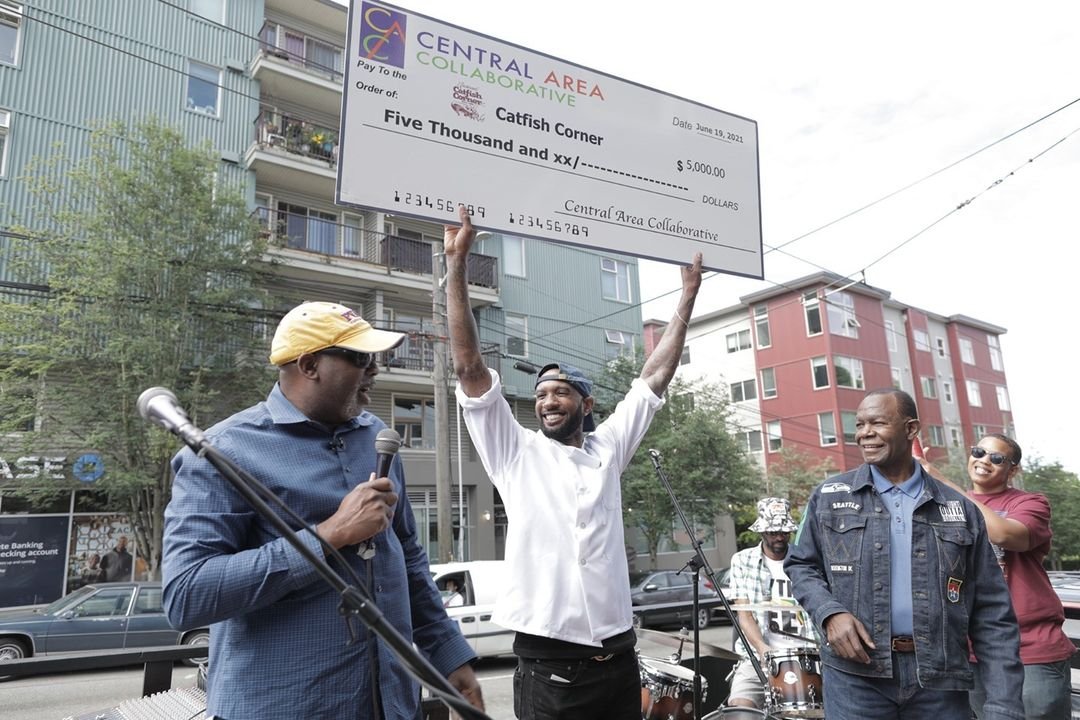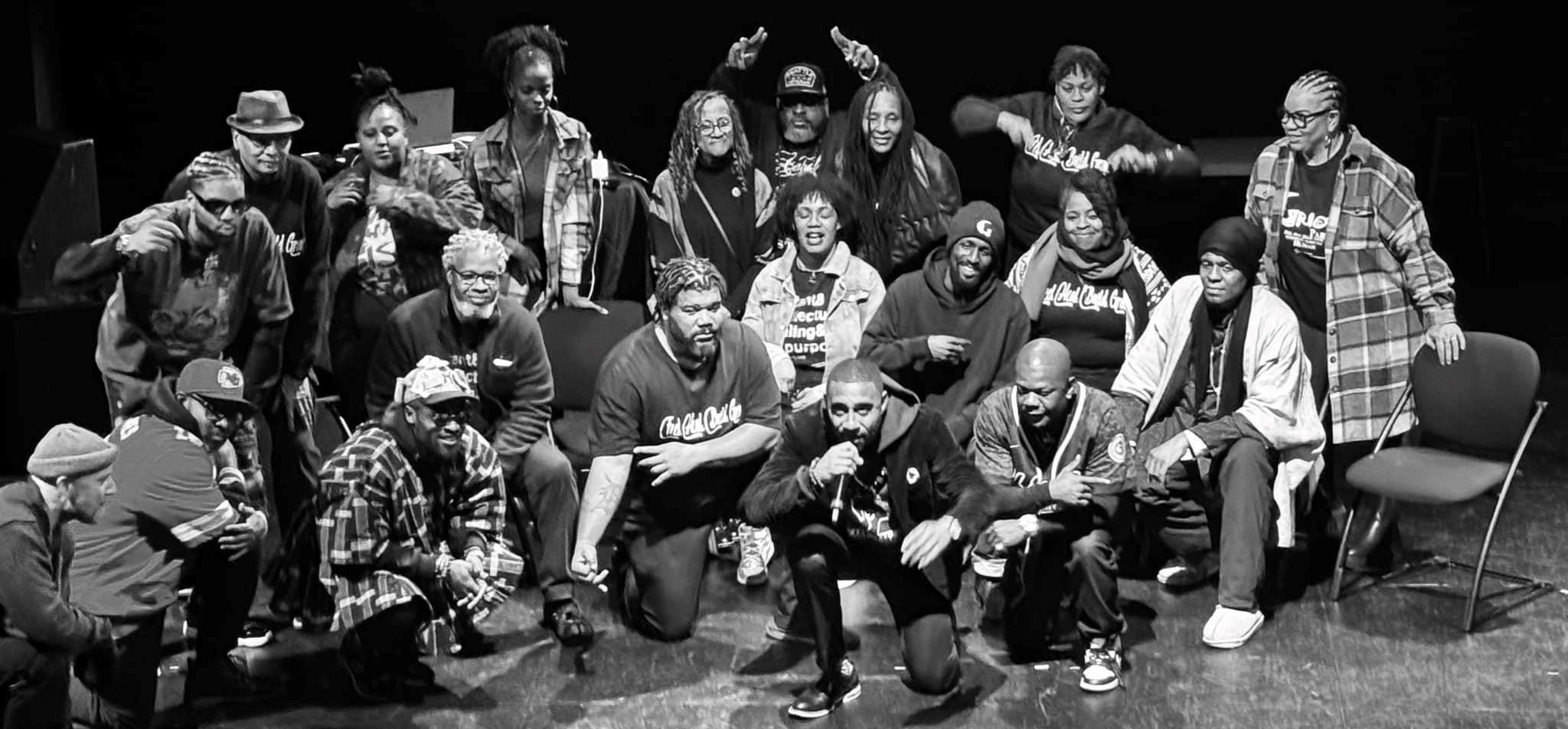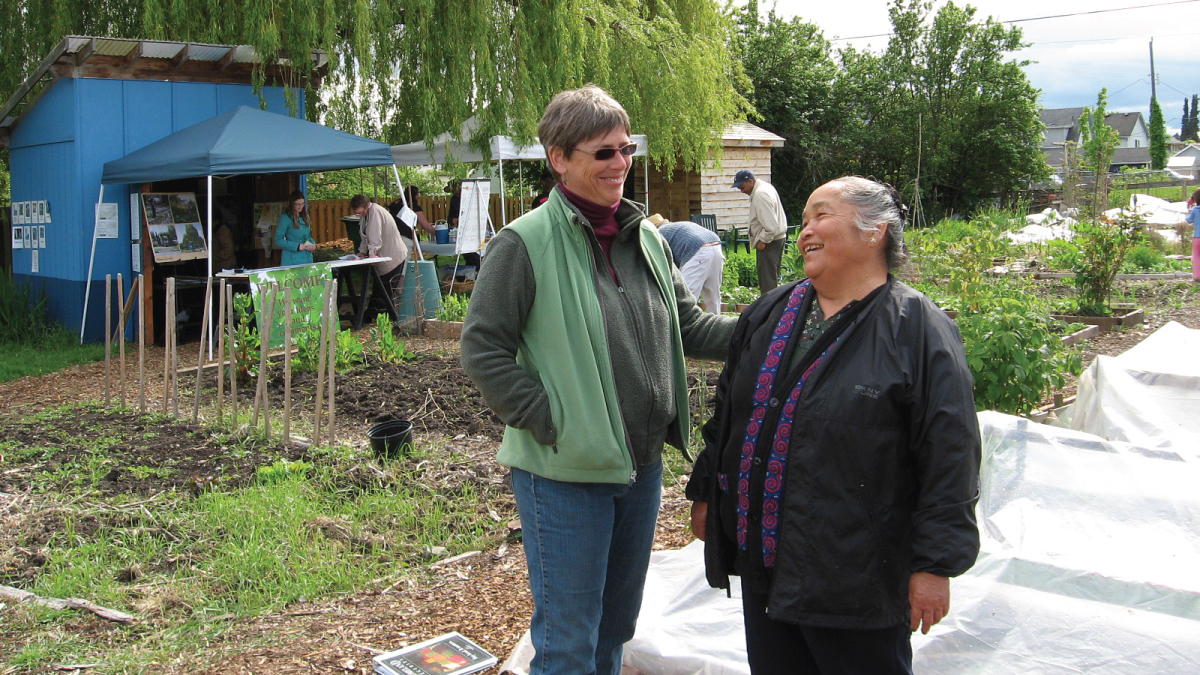 Julie Bryan (l) and Rangkham Praseurt at the Hillman City P-Patch in 2010
Julie Bryan (l) and Rangkham Praseurt at the Hillman City P-Patch in 2010 Rangkham Praseurt loved to spread beauty and joy in the world. As a gardener at the Hillman City P-Patch, she gained a reputation as the matriarch of the community garden. From volunteering in the food bank plots to sharing food and flowers with other gardeners, Rangkham always found a way to connect with others.
“Her English was limited but we communicated with plants, flowers, community, and food,” says Jennifer Bennett, a community gardener at Hillman City P-Patch. “She was always smiling, always helpful, always working…her hospitality and hugs were her trademark. She was just of the earth.”
Rangkham’s warm and welcoming spirit flourished despite a past of hardship and pain. She was Khmu, born in Northern Laos. Her husband was Thai and worked with the American military in opposition to communist forces in Southeast Asia through the 1960s and 1970s. As tensions increased, Rangkham and her husband and family were captured and became prisoners of war. They were sent to a forced labor camp where harsh living conditions and malnutrition claimed the lives of eight of her children. Because of her husband’s work with the U.S., her family was eventually granted asylum and made their new home in Seattle.
They settled in South Seattle, along with many other refugees from the wars in Southeast Asia. Rangkham plugged into the community quickly. She attended events and services at the Rainier Avenue Church and helped build houses for other refugees. When the Hillman City P-Patch opened in 1994, Rangkham and her two sisters were some of the first to sign up for plots.

Adapting to life in a new country is full of challenges. Often, language and cultural barriers prevent immigrants and refugees from meeting their neighbors. The P-Patch provided a space to build community and maintain a connection to their home country by growing cultural foods that were not always available in local grocery stores.
“A lot of people here are gardening in the way they did in their own country,” Jennifer says. “Either just a style of it, like how they put the poles up for their beans, what they do to the soil, or what they grow. You walk by one of their plots and it tells a story of their culture. There is so much knowledge.”
Rangkham’s knowledge of flora and fauna was vast and something she happily shared with others, but beyond that she was a cultivator of community. A conversation with her often ended with a trade. Sometimes it was plants, other times seeds, or maybe a dish of the “spiciest greens you’ve ever tasted.” For Rangkham, it was about more than growing plants or sharing food. Each interaction was an opportunity to sincerely connect with someone and build a relationship. They were a reminder that this garden was a special place. A space where people set bias aside and gathered to learn, share, and build something beautiful, together.
“Basically, every time I chatted with her, I walked away holding a handful of plants or seeds. She was also pushing plants on me, in the friendliest way possible,” says Marco Downs, another gardener at the Hillman City P-Patch. “When I think about Rangkham, she is smiling and laughing, and offering food and plants and love, freely.”
When Rangkham died in 2017, Jennifer, Marco, and many other gardeners wanted to find a way to memorialize her and her giving spirit. Although members frequently jump between available plots, Rangkham’s family has cared for the same garden beds since the inaugural year of the Hillman City P-Patch. They decided to build a memorial flower garden and seating area in a large, unused space adjacent to an entrance and Rangkham’s family plots, now maintained by her two daughters Suangrang and Boukham.
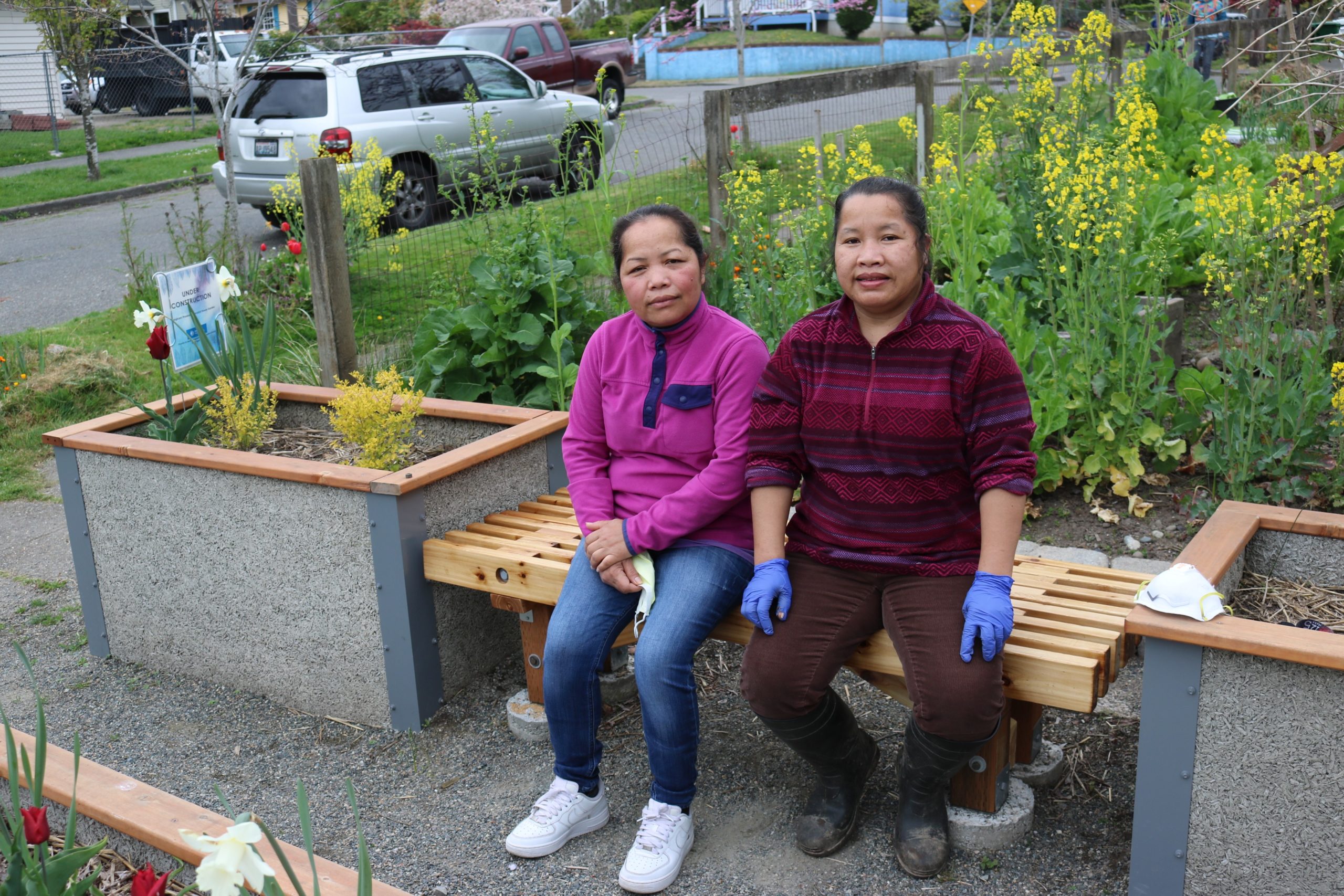
“I thought it was important to honor Rangkham and her family, not only because she deserves respect and remembrance, but because her gardens still nourish her family and community,” Marco says.
Though she primarily grew food, Rangkham loved flowers. The group planted a flower garden at the entrance to welcome people into the garden and help spread joy to the community-just like Ranghkam did. Since the memorial garden was developed, Jennifer has noticed more people walking through the garden, sitting on the benches, and taking time to absorb the beauty of their surroundings. She has also noticed a few surprises popping up in the flower garden like morel mushrooms, a large flowering Amaranta, and a medicinal plant that Rangkham’s daughter remembers her mom using to treat fevers.
“Through the whole process I tried to remember that we were building this project on the actual soil where Rangkham gardened,” recalls Marco. “A lot of the ‘weeds’ popping up in the space were beautiful flowers she planted, like cosmos and chicory.”
“I think it is her way of telling us that she is still around. She’s still gardening here,” Jennifer says. “One of the coolest things about doing this project was getting to know her eldest daughter better. She and I have become friends and now we share things too. The legacy of friendship carries on between the next generation.”
At a time when divisiveness and hostility dominate headlines, this small space serves as proof that love and hospitality can bloom anywhere as long as people are willing to move past their differences and find the common ground that connects us all.
The Rangkham Praseurt Memorial Garden was funded in part by our Neighborhood Matching Fund.
